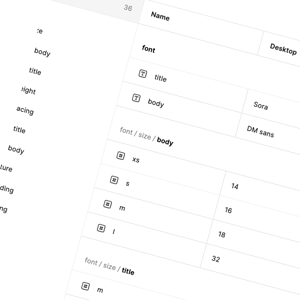This guide is for developers—whether you're just starting out or looking to sharpen your craft—who want to approach large features with confidence, clarity, and a mindset for sustainable development.
So, what does this mean for your business, and how can these innovations help you create better, smarter digital experiences?
No matter how long you've been in the software engineering game—whether you're a fresh-faced rookie, a battle-hardened veteran, or an ancient code wizard who remembers when CSS was the wild west—we all know the feeling of staring down a massive, looming deadline or starting a large feature. Suddenly, you're the White Rabbit from Alice in Wonderland, sprinting through your sprint, glancing nervously at the clock, muttering, 'I'm late! I'm late!' while your backlog grows like a Jabberwocky.
Like Alice tumbling down the rabbit hole, we’re often faced with a choice: do we let the task ahead stay massive and unmanageable, too big to fit through the tiny door of progress? Or do we shift our perspective—shrink the problem down to size—and find a way through? Sometimes, all it takes is a different point of view.
So how do we shrink a feature to fit through the door? Agile helps us manage time and complexity by guiding us to break large features into smaller, well-defined tasks—each one clarifying the architecture and moving us closer to the goal.
When the scope feels too big for the door
When we first tumble into a new project or feature, we often catch a glimpse of the end goal—a polished product, a seamless user experience, a happy stakeholder. But then we look around and realize we’re deep in Wonderland, surrounded by a vast, tangled forest of requirements, edge cases, and unknowns. It’s easy to feel overwhelmed. Developers, after all, are creatures of momentum—we crave progress, visible results, and the dopamine hit of a task marked 'done'.
But here’s the trick: just like Alice who couldn’t squeeze through the tiny door without changing her perspective (and her size), we can’t tackle a massive feature all at once. In Agile, when a story is too big to deliver in a single sprint, we elevate it to a feature or an epic. From there, we break it down into smaller more manageable set of user stories each one delivering a slice of the whole. This not only makes the work feel more achievable but also gives us a clear purpose and will make progress more visible
A real-world example: The filtered article component
Let’s take a look at an example feature Filtered Article component. At first glance this might seem like a single feature, but it’s actually a group of complex features that separately deliver slices of functionality. Within this component you need to deliver:
· Fetch data from and API or a CMS
· Apply multiple filters (e.g. category, date, tags, author)
· Display filtered results
· Sorting options
· Pagination for large data results.
Trying to deliver all of this as a whole is a recipe for stress and delivering a solution that is difficult to maintain and not scalable. So it would be completely valid to ask ‘Where do I start?’
So this is where Agile and componentisation magic comes in. I know what thinking you’ve gone as mad as the Hatter. How can you go from having one big deliverable to breaking it down to smaller chunks each delivering a small feature that gives you reusable extendable features without breaking the budget or time line of a project.
But that’s the beauty of it. By breaking the feature down into focused, reusable components like filters, results, a pagination controls we’re not just making the work more manageable. We’re building a toolkit. Each piece can be developed, tested, and reused across the project. It’s not just about delivering faster it’s about delivering smarter. And suddenly, what looked like a chaotic tea party becomes a well-set table of modular, maintainable code.
From chaos to clarity: Agile stages as guide to feature Breakdown
Just like Alice needed a map to navigate Wonderland, we need a framework to guide us through the complexity of building features. That’s where the stages of Agile methodology come in—not just as a process for delivery, but as a mindset for deconstructing complexity into sustainable, scalable parts.
1. Backlog grooming (or Refinement)
This is where the magic begins. We take the big idea, the epic and start asking questions. What’s the user trying to achieve? What are the edge cases? What’s the minimum valuable slice we can deliver?
Think of this as peeking through the keyhole before opening the door.
2. Sprint planning
Here, we break the epic into user stories each one a small, testable, and valuable piece of the whole. We define acceptance criteria, dependencies, and priorities.
This is where the giant feature starts to shrink into bite-sized, achievable tasks.
3. Development
Each story becomes a focused development task. We build modular components—filters, pagination, sorting each one reusable and independently testable.
Instead of building a castle in one go, we lay bricks with care and intention.
4. Validate each piece as it’s built.
This ensures quality and helps us catch architectural issues early.
Like Alice checking her size before walking through the door we make sure each piece fits.
5 .Demo & retrospective
We showcase progress, gather feedback, and reflect on what worked. This helps us continuously improve how we break down and deliver features.
Even Wonderland has rules and retrospectives help us write better ones for the next journey.
Final thought: From overwhelmed to intentional—a mindset shift for all developers
This mindset of breaking down complexity, designing reusable components, and thinking in systems isn’t just for senior developers. It’s a skill that benefits everyone, from those just starting out to those leading architecture decisions. It’s not just about writing code; it’s about building solutions that scale, adapt, and last.
So next time you find yourself tumbling into a big, scary feature, remember: shrink the problem, build with intention, and trust the process. Wonderland isn’t so wild when you’ve got a map.
























